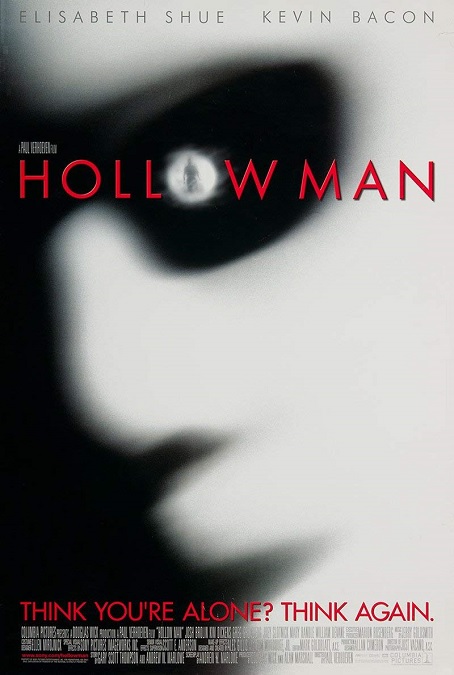



2000 – Hollow Man

This movie was one of those films that would have been average on its own, but it was elevated to greatness because of its special effects. But I’m starting to see a pattern in its director, Paul Verhoeven. The same assessment could be given to some of his other movies. He also directed two other Best Visual Effects nominees, Starship Troopers and Total Recall. Not that I’m complaining, mind you. It’s just something I’ve noticed.
Hollow Man was a modern take on the 1933 film, The Invisible Man. But where the original movie had to create all their effects practically, this one was able to make use of both practical effects and CGI, along with other modern techniques like motion tracking. The resulting effects were both realistic and scientifically accurate.
Of course, the big thing was the invisible Kevin Bacon, which was done so incredibly well and interestingly! For the most part, it was done pretty simply, by having the actor in a green body suit, which a computer was able to digitally remove from the image. But Verhoeven made great use of camera angles to really display what could be done. For example, as part of the plot, they made him a kind of rubber mask, but when you looked into the eyes of the mask, you could see the inside of the back of the mask, which was lit by the light coming in through the eye holes. There was even a great shot where he turns his head to the side, and you could see the wall behind him through both eye holes at the same time. Very cool.
But there was also the different incarnations of the invisible man. We see him through smoke, fire, rain, and underwater. The actor played out his part wearing different colored body suits that were coordinated for optimal for visibility and clarity in the different mediums. For example, in the underwater sequence, neither blue nor green really worked, so they had him in black.
But another one of the movie’s great effects achievements was the transition processes, both of making someone turn invisible, and of making them visible again. It was done in layers of the body. The plot made the process happen by chemical injection. From the point of the needle, we see the veins appear. After the serum makes its way to the heart, it enters the arteries and the brain. Then the bones, organs, muscles, tendons, and ligaments begin to appear in sequence. It was really fascinating because they paid attention to the actual details of anatomy, first of a gorilla, then of a Kevin Bacon.
The climax of the movie was a little more commonplace with fire and explosions, and people getting stabbed and that kind of thing. These effects were done well enough, but hardly innovative. And that’s ok. The rest of the film’s effects were very inventive and realistically enacted. All in all, very good effects!
Hollow Man is bad . Why would you give that 5 star?!
The stars are not for the film, but for the film’s visual effects, a distinction that I feel my review makes pretty clear.